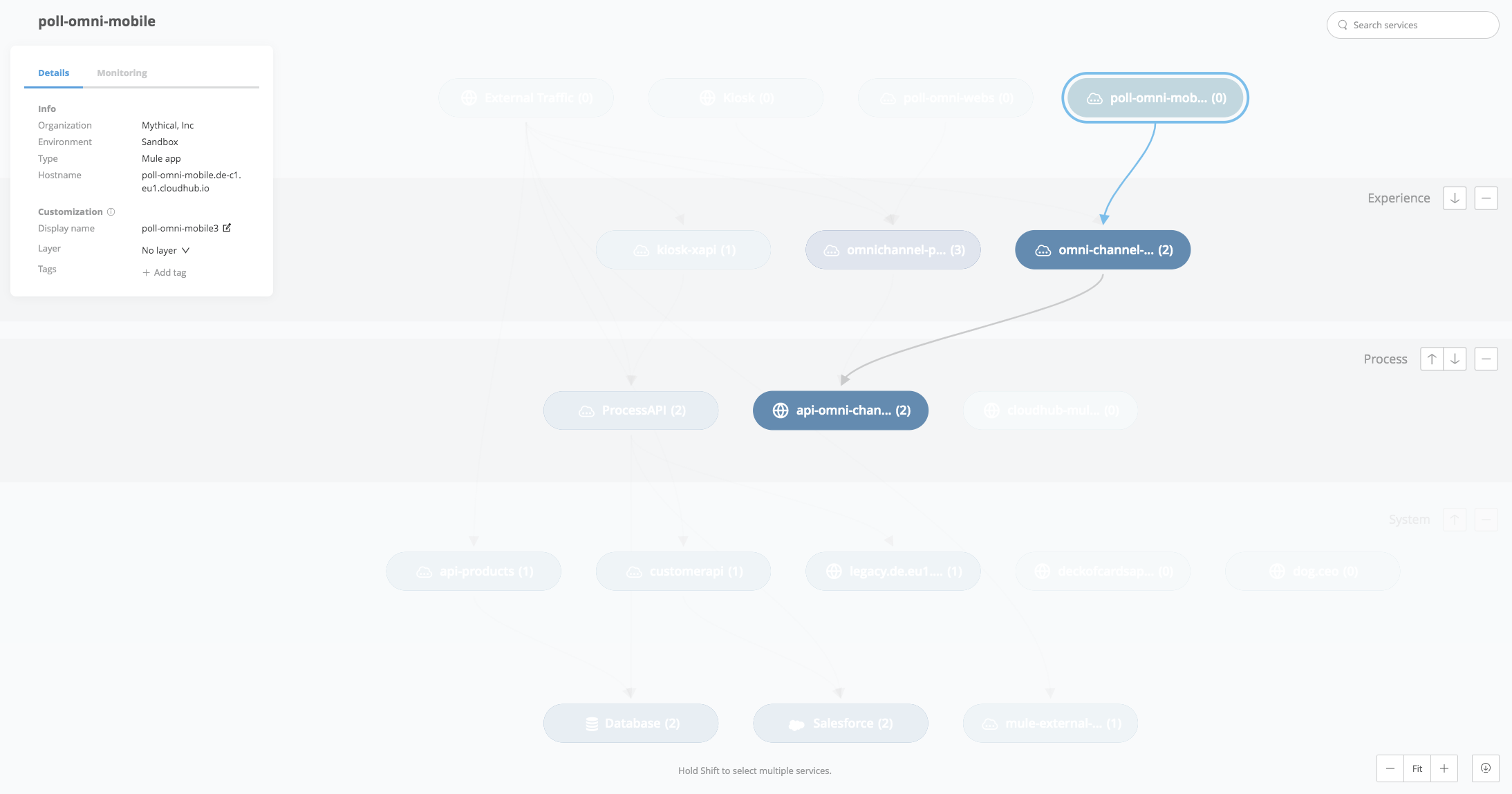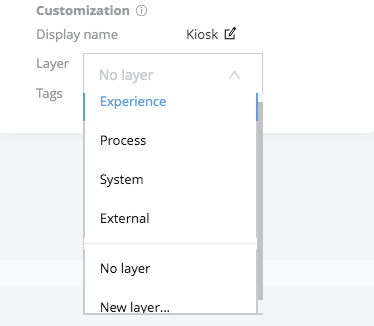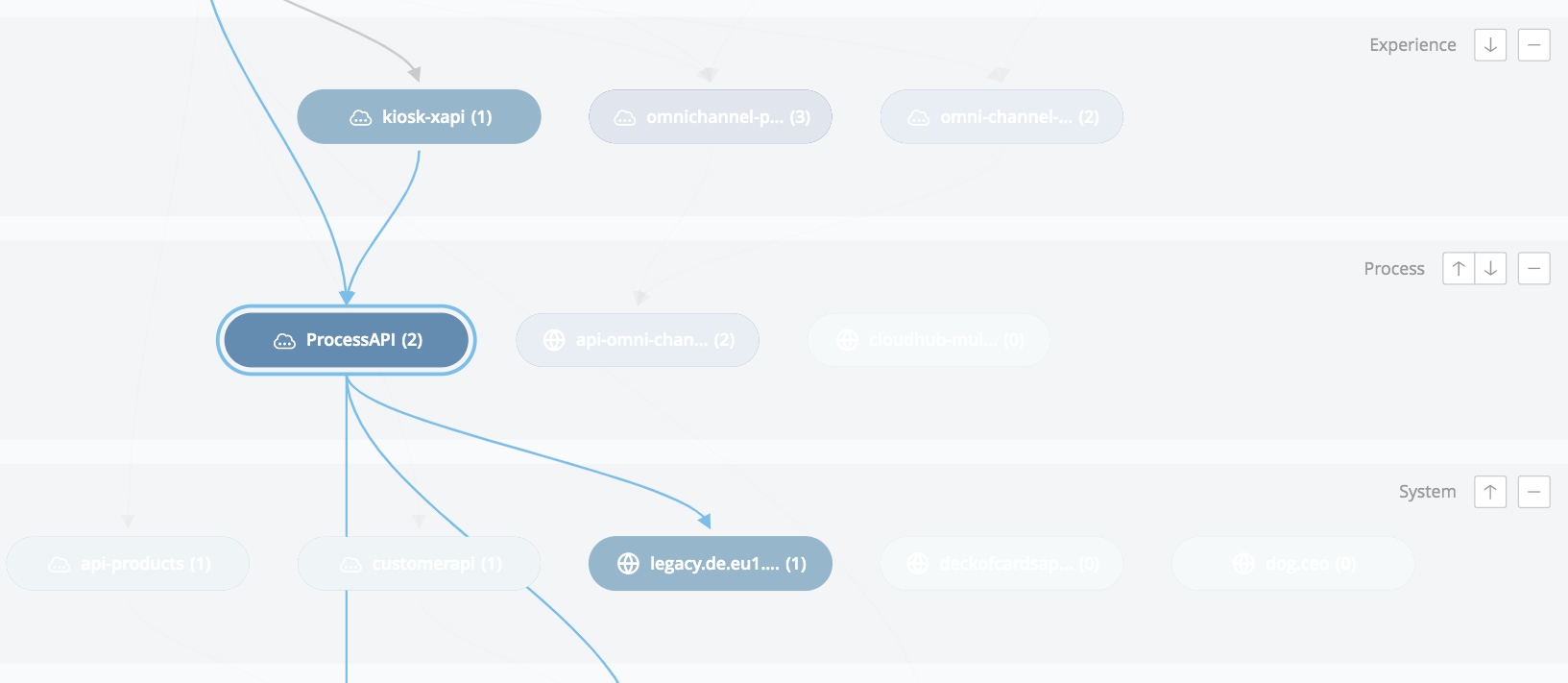
Using Layers in API Visualizer
When you associate a node with a layer, you create a visual representation of the applications in your network. Use one of the default layers provided by API Visualizer, or create a custom layer.
| The application appears in its assigned layer in every defined view in which it’s included. It also appears in the correct layer across all visualization types. |
Add a Service to a Layer
Map a node to a layer in the application’s properties file, or using the UI in the Architecture visualization.
Set a Layer with Properties
Use the anypoint.platform.visualizer.layer=<name> property to automate adding nodes to a layer either by adding it to application’s properties at deployment time through the Runtime Manager UI, CI/CD (Maven), or API.
This property is an application property, not a server property. When you use this property, nodes automatically appear in the specified layer and, if that layer doesn’t exist, it’s automatically created.
You can’t reassign a node layer using the API Visualizer UI if you assign it using an application property.
Set a Layer with the Architecture Visualization UI
If a node wasn’t assigned to a layer at deployment time using the Runtime Manager UI or API, by default, the node isn’t assigned to a layer in API Visualizer. Use the API Visualizer UI to:
-
Assign a node to an existing layer or, if the node does not have a layer set via properties, change the assigned layer.
-
Create a new layer.
Assign a Layer to a Node
-
Within the Architecture visualization, select the application node to add to a layer.
Hold the shift key to select multiple nodes to apply layers to all the selected nodes at once.
The Customization section for the node appears in the Customization tab of the node’s card:

-
In the Customization section, expand the drop-down list next to Layer as shown in this image:

-
Select the layer from the drop-down list.
The node you selected appears within the layer as shown in this image:

Create a New Layer
In addition to the default layers provided by API Visualizer, you can create new layers to customize the view of your application network.
-
Select the node to add to a new layer.
-
From the drop-down list in the Customization section, select New Layer.
-
Enter a name for your layer in the dialog box, then select Create Layer.
The node appears in the new layer. You can add additional nodes to the new layer as necessary.
Delete a Layer
If a layer has no services assigned to it, API Visualizer deletes the layer automatically:
-
If the layer is a default layer, it disappears from the canvas but is still available in the dropdown.
-
If the layer is a custom layer, it disappears from the canvas and the dropdown.
API Visualizer also automatically adjusts the network display.
Reorder Layers
In the canvas of the Architecture visualization, use the arrows to move it up or down relative to the other layers.



